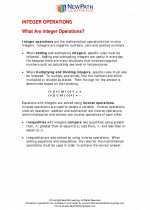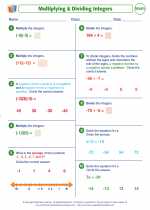Linear Functions Study Guide
A linear function is a mathematical function that can be graphically represented as a straight line. The general form of a linear function is:
f(x) = mx + b
Where:
- f(x) is the dependent variable
- x is the independent variable
- m is the slope of the line
- b is the y-intercept (the value of y when x = 0)
Key Concepts
1. Slope: The slope of a linear function represents the rate of change of the function. It is the coefficient of x in the function's equation (m in the general form).
2. Y-Intercept: The y-intercept is the point where the graph of the linear function intersects the y-axis. It is the constant term in the function's equation (b in the general form).
Graphing Linear Functions
To graph a linear function, you can use the slope and y-intercept. Plot the y-intercept on the y-axis, and then use the slope to find additional points on the line. Connect the points to create the graph of the linear function.
Example
Let's consider the linear function f(x) = 2x + 3. The slope is 2 and the y-intercept is 3. To graph this function, we can start by plotting the point (0, 3) on the y-axis, and then use the slope to find more points to connect and create the line.
Applications
Linear functions are used to model a wide range of real-world phenomena, such as population growth, cost analysis, and revenue projections. Understanding linear functions is essential for analyzing and solving problems in various fields.
Study Tips
To master linear functions, practice graphing various linear functions and understanding how changes in the slope and y-intercept affect the graph. Additionally, work on real-world problems involving linear functions to reinforce your understanding of their applications.
.◂Math Worksheets and Study Guides Eighth Grade. Integer operations

 Worksheet/Answer key
Worksheet/Answer key
 Worksheet/Answer key
Worksheet/Answer key
 Worksheet/Answer key
Worksheet/Answer key
 Worksheet/Answer key
Worksheet/Answer key
